This blog post is sponsored by The Tile Shop
One of our Instagram followers responded to a preview photo of our mud tile with the comment that “gives… “I live in a boutique hotel,’” and I couldn’t be more right. Every time I step into the hallway, I feel like I’m walking into a glamorous pastry shop in Paris or a five-star lobby in New York. I wanted to share more details on how we created the look in case you’re hoping to replicate something similar in your own home. So I’m turning it over to Chris to share with you the behind-the-scenes process.
Why the change to tile
Chris here. So the back hallway and mud room had a bit of a problem. It had a wooden floor that was separated by hot and cold temperatures through the seasons. This is what sparked the idea of redoing the floors.
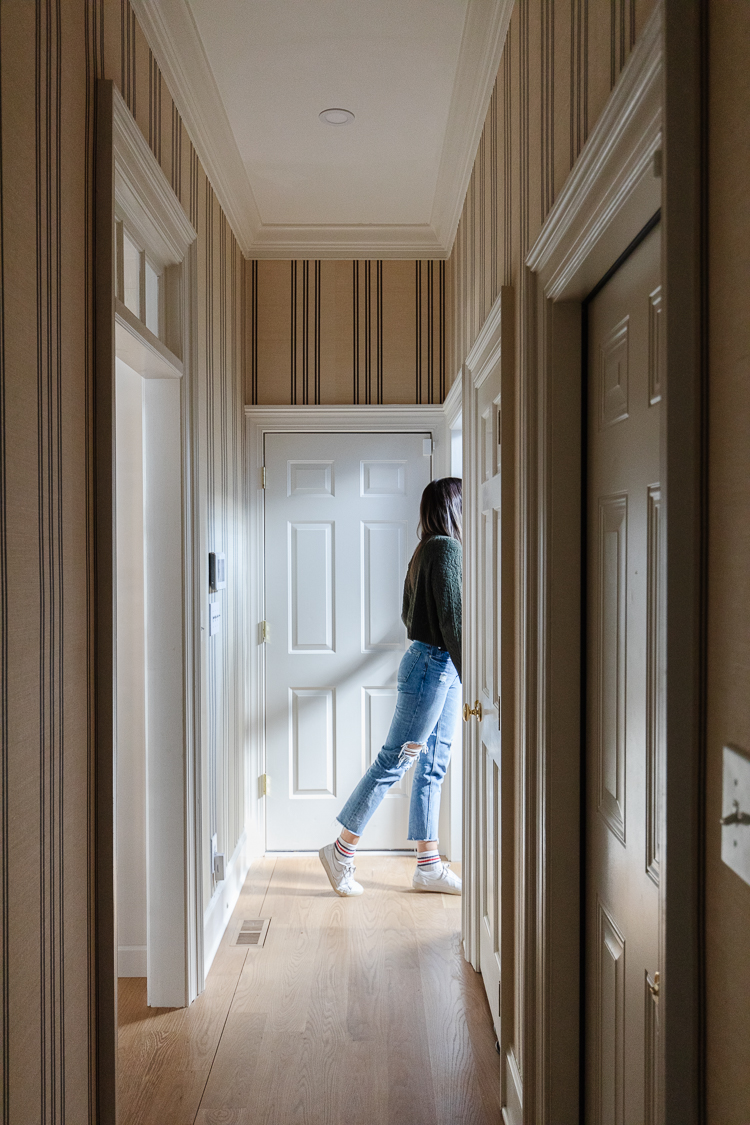
Striped grass backgrounds
We immediately thought of The Tile Shop. We’ve used their tile in many projects in the past, including penny tile in our downstairs powder room and five different tiles (!) in the master bath in our last home.
When we landed on tile for its function and decorative qualities, our contractor ripped out all of the hardwood — which actually ended up causing some pretty large measurements in the subfloor that they then had to repair. The way they fixed it was to put an extra thick layer of thin layer of plaster with a concrete slab on top. And then they used a level as they screwed it in to make sure the sub was nice and even.
From there, they taped and messed up the seams to make them seamless on the base, so that – as the seasons move – we no longer see the gaps we’ve been creating in the wood.
How we decided on the look
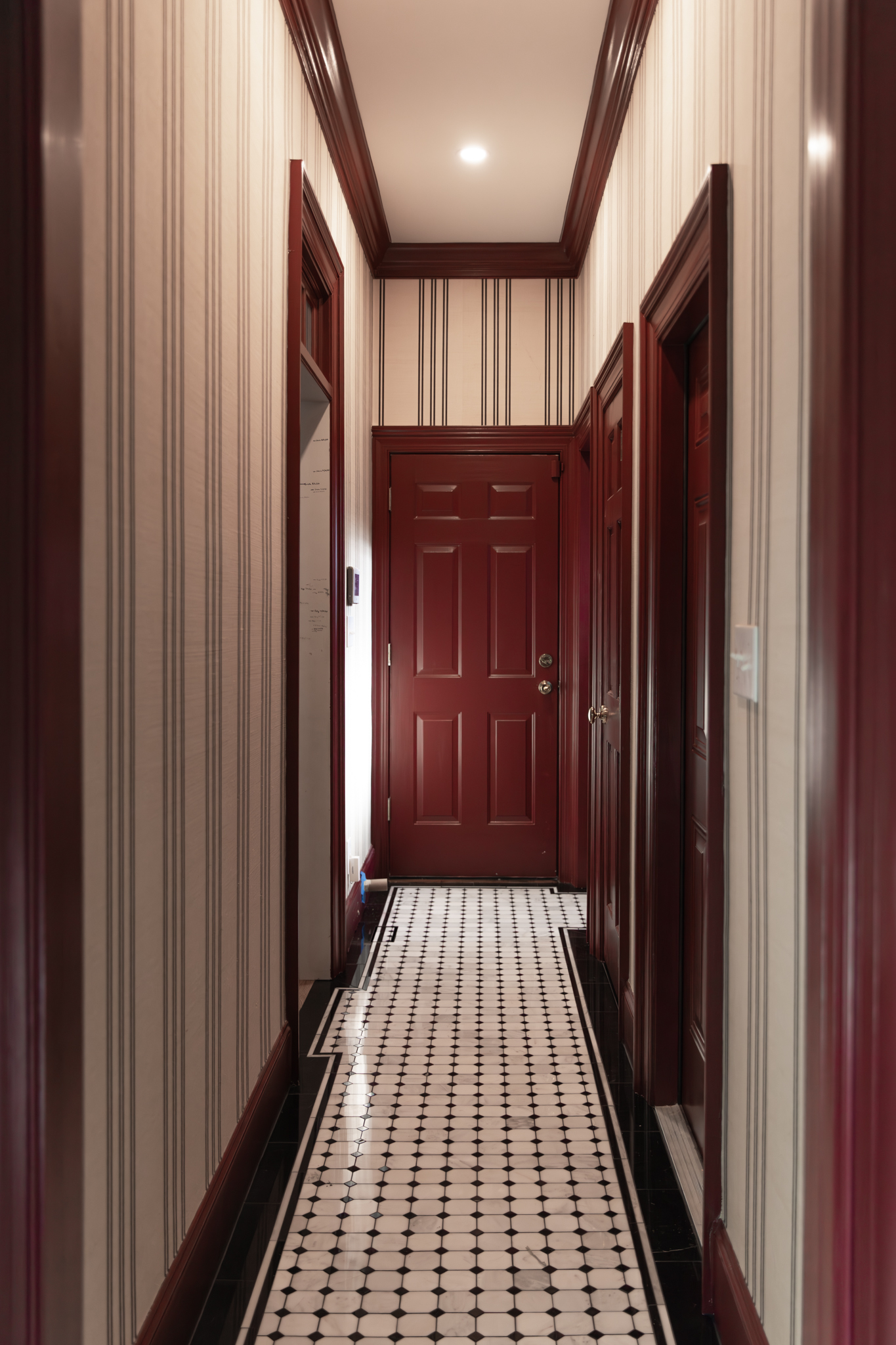
We saw inspiration on the internet for a hallway that looked so classic. So we created a mood board and went to The Tile Shop to see what we could find to match that vision. We originally chose a single thick black border around a central white octagonal tile pattern with black dots. But then Julia wanted to add a more detailed look with two adjacent pencil tiles. We chose one that matched the lighter marble stone in the main area. And then we decided to add another pen in black border.
The Tile Shop had a lighter pencil trim available, and we were able to cut the black pencil from the original black tile edge, placing the cut edges into the wall so it’s under the plinth and you can’t see it. It was so worth it – I think these pencils made all the difference in how the pattern would pop.
The Tile Shop has so many options for decorations and accessories that allow you to completely customize your design. Plus, they often have full collections with matching trim pieces that make for an easy and affordable look.
Choosing a grout color
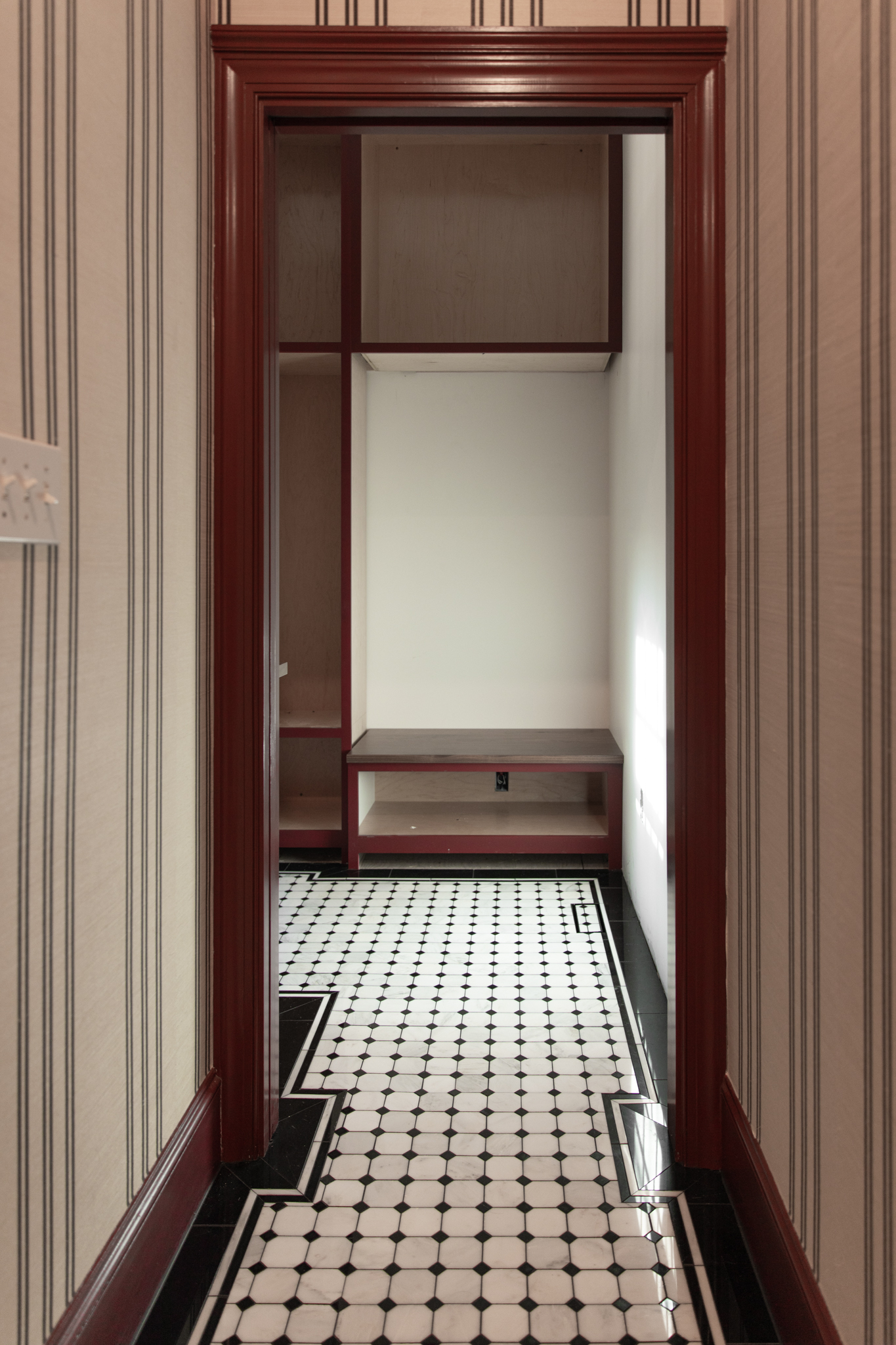
Our contractor Kennon Construction brought several samples in tile grout books. They have color matching plastic chips that you can place next to the tile to get the look you want. Julia usually likes a lighter grout color. However, if we were to go with light grout in the mud, then the black border tile around the sides would stick out like a sore thumb. She felt like a white tile could handle a darker grout (no pun intended) more easily than a dark tile could handle a lighter grout. So she chose a very dark charcoal that had a little heat so that it would almost melt into the black tile at the edge.
Installation of tiles
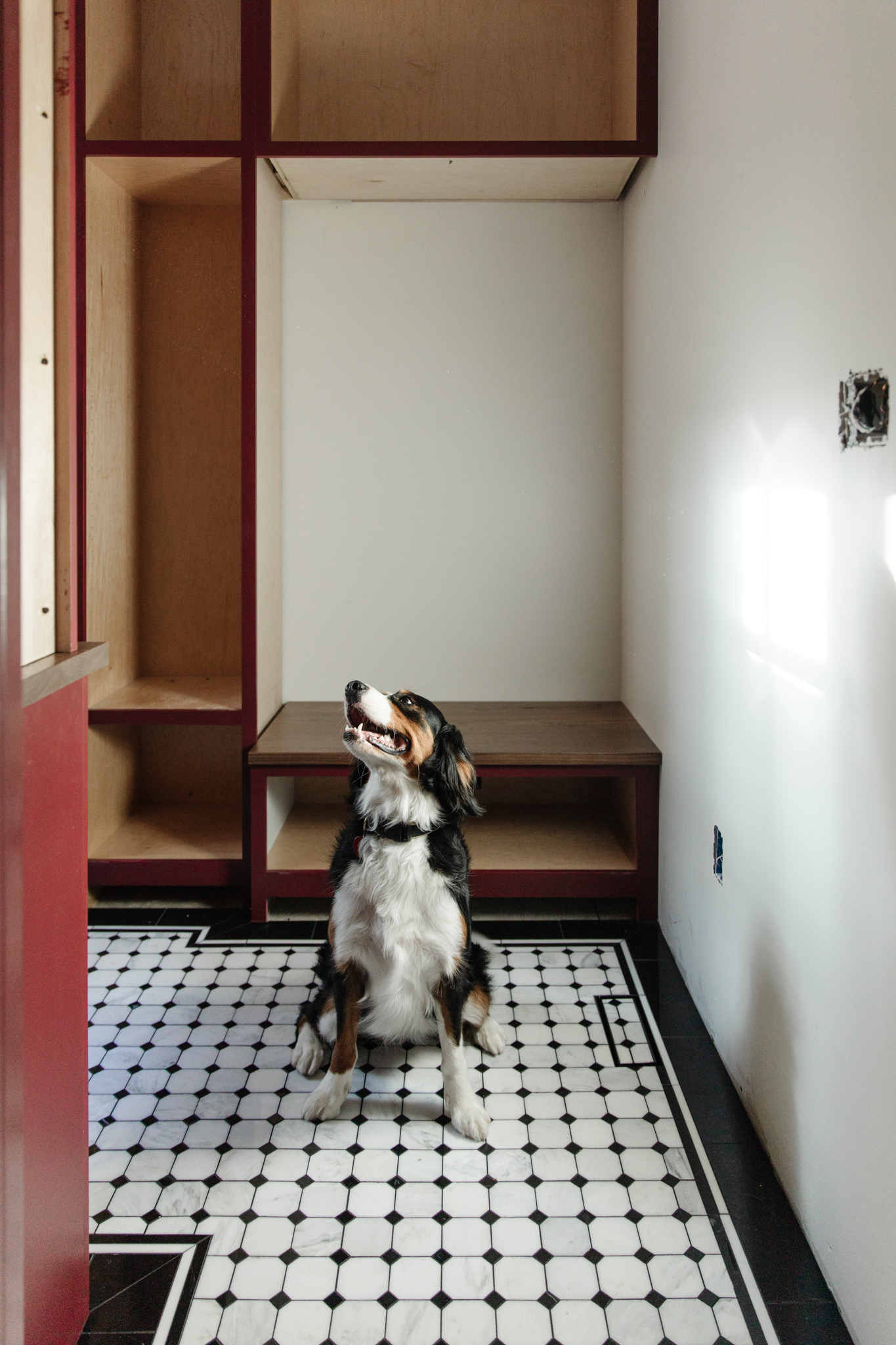
The subcontractor installed the entire border first. We talked through all the doors, how we wanted it to look. Honestly, I’ve never seen a potter like this. His attention to detail was simply impeccable. He planned for the front door: like you walk in this door and the pattern is centered, but also how far you start this other way so it’s centered on the steps right next to it. So you don’t go off on weird visual tangents in any of those areas. We found it through our contractor Kennon; they just have great subcontractors.
Then the team made a corridor in the garage out of pieces of wood so that they could measure those perfectly and dry parts of the hall and mud in the garage. The reason they did this was because they wanted to perfectly center the hall tiles in that space. It helps keep everything even.
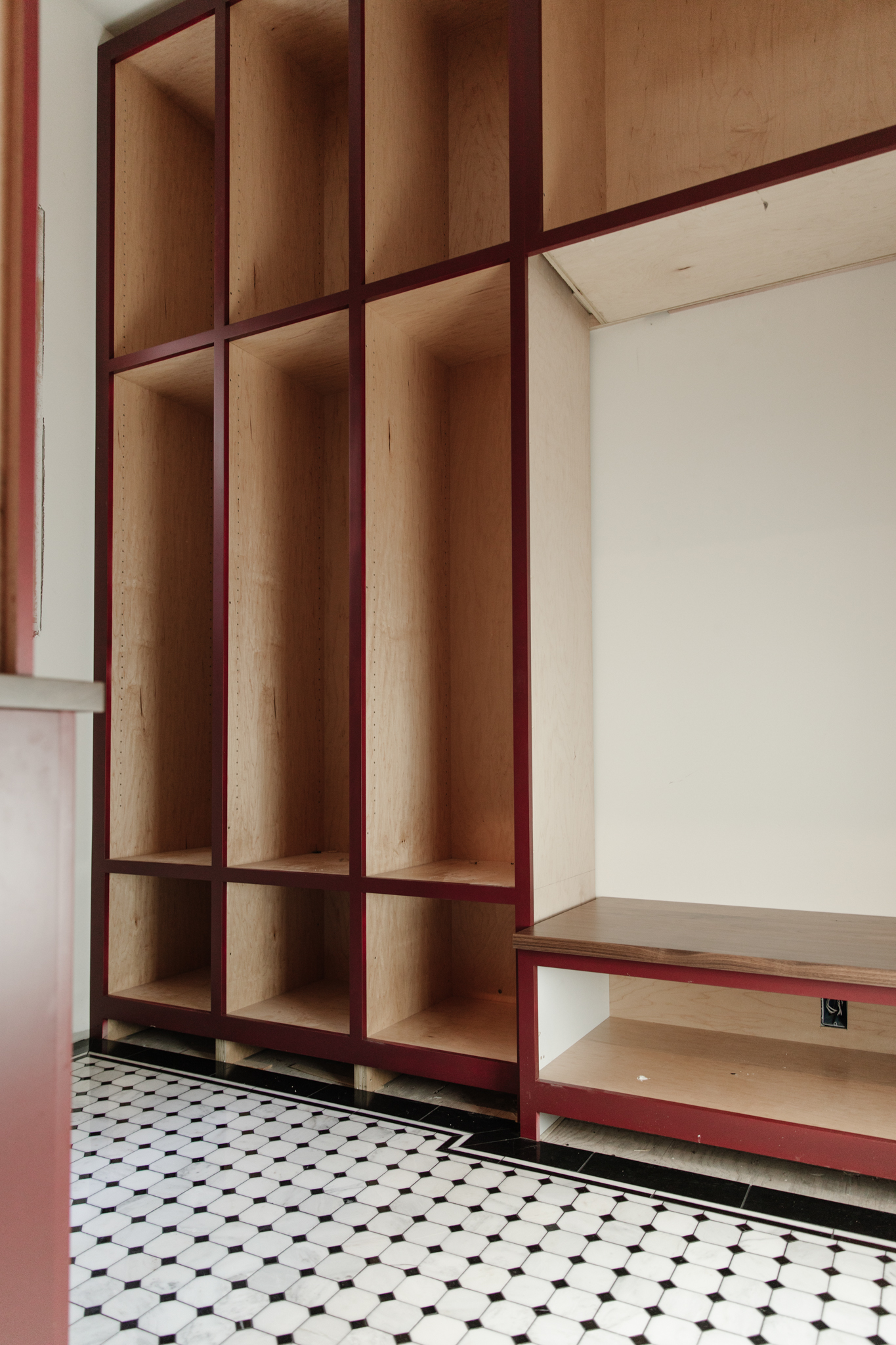
So they measured the space they had for tiling and then used wooden strips. They would tape them together and lock them in the garage. Then they would measure it, cut the tiles and lay them in large sections in the garage. They would put that part in the garage and then work on the next part. So they had the entire area dry laid, cut and ready before they even started to install anything in the actual space.
And so, when they entered the room, the team headed to the back corner of the toilet. They were able to set everything up within hours. And everything was lined up perfectly.
If you’re going to do something similar at home, one tip from our tile installer is to put masking tape or painter’s tape on the cut lines to reduce chipping around rounded edges and cuts. Tape the cut lines and cut very slowly to get perfect seams that look professional.
It’s such a joy to see this vision come to life in stunning black and white. In case you’re interested, we’ll share more about the dog-friendly corner at another time, so stay tuned!